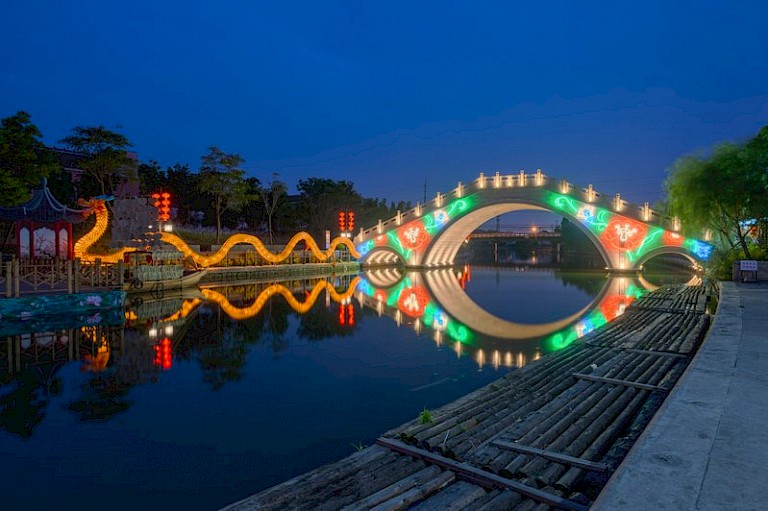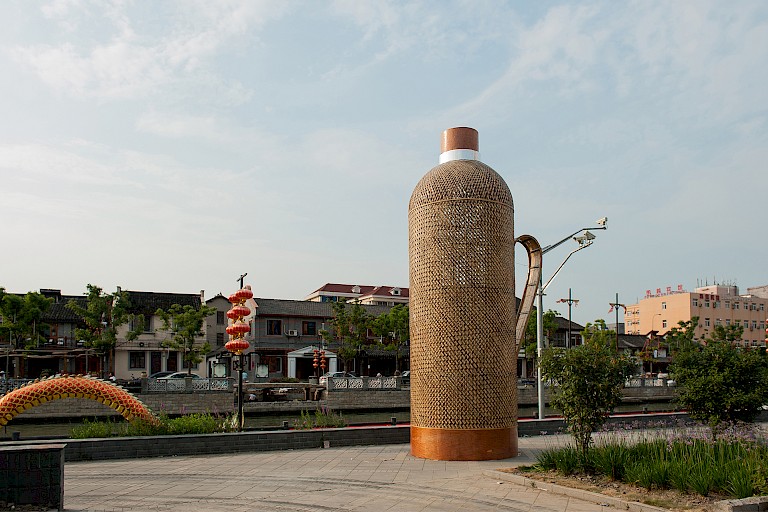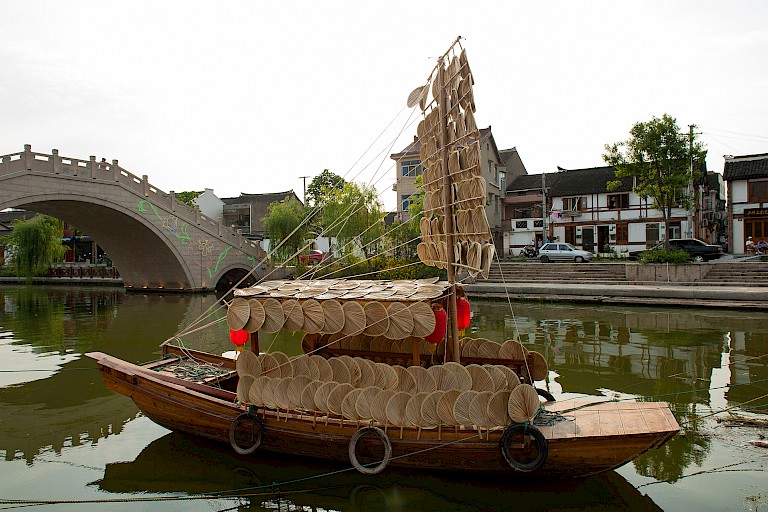



One of the 15 works, the blue tent which echoed the style of traditional Chinese architecture, for example, drew the attention of the public to the stark contrast between classical Chinese and modern industrial aesthetics. By allowing audiences to step into the makeshift ‘home’ the work facilitated reflection in a playful atmosphere, encouraging a convivial spirit in the random social encounters it facilitated. Another work used the materials and vocabulary of industrial construction and urban development—in this case, traffic cones and wooden workbenches—to stage a sculptural form familiar to the Chinese, a dragon, against a natural backdrop of trees. Like the other work, this too asked the public to contemplate the dissonances and possibilities for harmonization between the natural and industrial/artificial components of contemporary Pudong life.
In the view of the philosopher and Sinologist François Jullien, the Chinese were not as swift to develop the sciences as Europeans because of an entirely different aesthetic sensibility. The Greek/European aesthetic tradition valorized a close study of the objective domain in which the world of nature to be represented and subsequently manipulated through science and technology. In contrast, the Chinese tradition emphasized the unifying ‘energy’ or ‘life force’ that connects people and landscapes within an overall process of natural transformation. While the Greek tradition sought to confront and intervene in nature, the Chinese tradition focused instead on harmonization with nature. This project manages to highlight this aesthetic difference in a moment in history when the legacy of Chinese aesthetics confronts that of European aesthetics, suggesting that a middle path may be possible through a kind of social-spatial hybridization.
All copyright belongs to Shanghai Academy of Fine Arts, Shanghai University.



